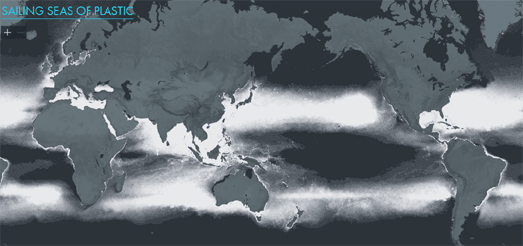The Biggest Plastic Polluting Brands

In September volunteers around the world took part in an audit of plastic litter. Nearly half a million pieces of plastic waste were collected in 51 different countries. 43% of those individual pieces of plastic were clearly marked with a consumer brand. The top global plastic polluter around the world, according to the audit, was Coca Cola. This is the second year in a row that Coca Cola was the largest plastic polluter, based on the results of the World Clean Up Day audit. 11,732 pieces of Coca Cola branded plastics were found in total. This is more than the next three top brands combined.
The Biggest Plastic Polluters interactive map allows you to view the levels of plastic found in countries around the world. The map uses colored scaled markers to show the amount of plastic picked up in all 51 countries who took part in the audit. You can view the 'Grand Total' of all plastic found in each county or view maps of the 'Coca Cola', 'Nestle', or 'Pepsi' branded plastics found in each country.
The map itself you can take with a pinch of salt. Obviously the totals found in each country are somewhat dependent on the number of volunteers who took part in the audit in each country. The largest markers therefore don't necessarily show the countries producing the largest amount of plastic waste. However it is interesting to see how much the different branded plastics make up of the total number of plastics found in each country.

The Ocean Cleanup probably provides a more scientific assessment of plastic pollution levels around the world. The Ocean Cleanup claims that "80% of river plastic pollution entering the world's oceans stem from 1000 rivers". In Plastic Sources the organization has mapped out what they say are the world's 1,000 most polluting rivers and the 30,000 rivers responsible for the other 20% of the plastic entering our oceans.
Currently the map includes very little information on how the organization calculates the amount of plastic waste distributed by each river or how they determine which are the most polluted rivers. The organization says that their model is based on data on 'plastic waste, land-use, wind, precipitation and rivers' but not where that data comes from. It does say that "Detailed information on our modeling approach and data will follow in our scientific update."
Litterbase is another organization which is attempting to determine the source of the plastic pollution found in the world's oceans. Currently Litterbase provides a summarized overview of the results from over 1,900 studies into the amount and composition of litter and its effect on marine environments. An example of one of these summaries is Distribution of Litter Types in Different Realms, which is an interactive map created from the results of 916 scientific publications on the amount, distribution and composition of litter in the world's oceans.

There are gaps in our knowledge where little scientific research has taken place, for example around Africa and the Polar regions. One way that we can fill in these gaps in our knowledge is by modeling the density of pollution in the oceans based on the results of scientific studies. Sailing Seas of Plastic is a dot density map which shows the estimated concentration of floating plastic in the oceans based on the results of 24 survey expeditions (2007-2013) and on wind and ocean drift models.
Each dot on the Sailing Seas of Plastic map represents 20 kg of floating plastic. According to the map there are 5,250 billion pieces of plastic adrift on the seas of the world. If you want you can also overlay the sailing tracks of the 24 survey expeditions on top of the dot map.


Комментарии